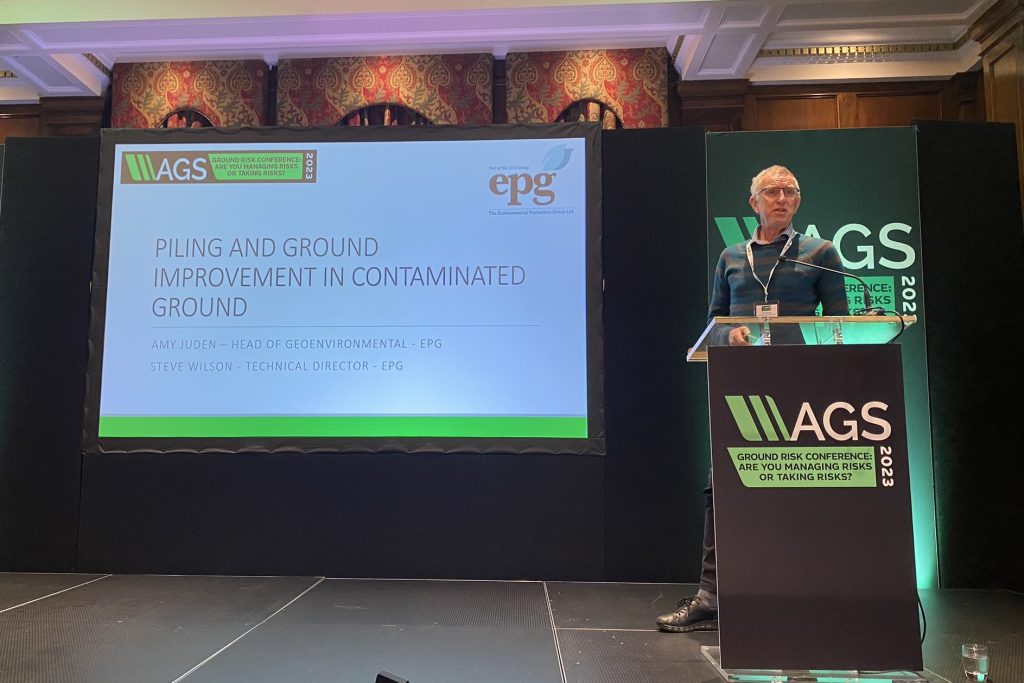
New guidance on piling risk assessments for contaminated land will include updated piling and ground improvement methods, and a new pollution scenario that considers turbidity, delegates heard at the recent AGS ground risk conference.
At the event last Wednesday (23 November), Environmental Protection Group (EPG) technical director Steve Wilson provided an update on key findings from work to update the guidance.
The guidance covers piling and penetrative ground improvement methods on land affected by contamination. It is being developed by the EPG on behalf of sustainable land reuse ogranisation CLAIRE and client the Enviroment Agency (EA).
The last guidance on the subject was published by the EA in 2001.
Wilson told the Association of Geotechnical and Geoenvironmental Specialists’ (AGS’s) conference audience that the new guidance aims to “improve consistency in the decisions that people are making”.
It brings together recent research that looks at whether driven piles create preferential pathways for groundwater and gas migration, and includes around 40 references to research papers on the subject – including a significant body of research done at the University of Sheffield in 2006.
This literature review has resulted in several key changes to the guidance.
One is that the authors have updated the piling and ground improvement methods discussed in the document, because the methods have advanced since 2001. For example, it includes sheet piling, which Wilson said has the potential to cause preferential pathways.
The old guidance advised that contractors should decide what piles to use based on structural, geotechnical and noise considerations, after which they would do a risk assessment for groundwater and contamination – which Wilson said is “too late in the day”.
The new guidance recommends that potential environmental impacts should be given preferential weight above those laid out in the original guidance.
While the new guidance has retained the six pollution scenarios that were included in the original guidance, it has added an extra one about causing off site gas migration.
Also included in the new guidance is an assessment of turbidity risks – the measure of water clarity – from piling.
“Everything we’ve been told so far is that there is no direct link between piling causing turbidity issues. The problem is that it is a very severe consequence if you do cause it, because you’ll be shutting down a public water supply. So we’ve got to be very careful about it,” said Wilson.
“The risk is dependent on where you are in the aquifer with the piles. If you’re at the top of the water and you’re not in the groundwater, that’s obviously a lot lower risk than if you’re piling down into the groundwater in the zone where the flow is towards the borehole. So, we’ve got different levels of risk that we can start to look at.”
Wilson told the audience that an important finding of the research for the guidance update was that driven piles should no longer be considered “the baddies”.
“If you’ve got closed or infilled steel driven piles, precast concrete driven piles, they don’t create the preferential pathways for groundwater or gas migration in a lot of cases,” explained Wilson.
“Unless there is a ground source under significant pressure and a cover layer of stiff over consolidated clay less than two pile diameters thick that is penetrated.”
He added that the risk of driving down contamination is minimal, especially if you have a conical tip on the piles.
Another issue that Wilson and his team have included in the guidance is chlorinated solvents, which can decimate clays as they diffuse downwards.
Finally, Wilson said that the new guidance emphasises the importance of carrying out a piling risk assessment at desk study stage, which is progressively refined as site investigation data is collected.
This can be used to make judgements about a site and understand it more at desk study stage.
“You can actually start to identify the things that are going to effect the choice of piling method, so it’s really important that we start including this at desk study stage,” he concluded.
This post was originally published on this site be sure to check out more of their content.








